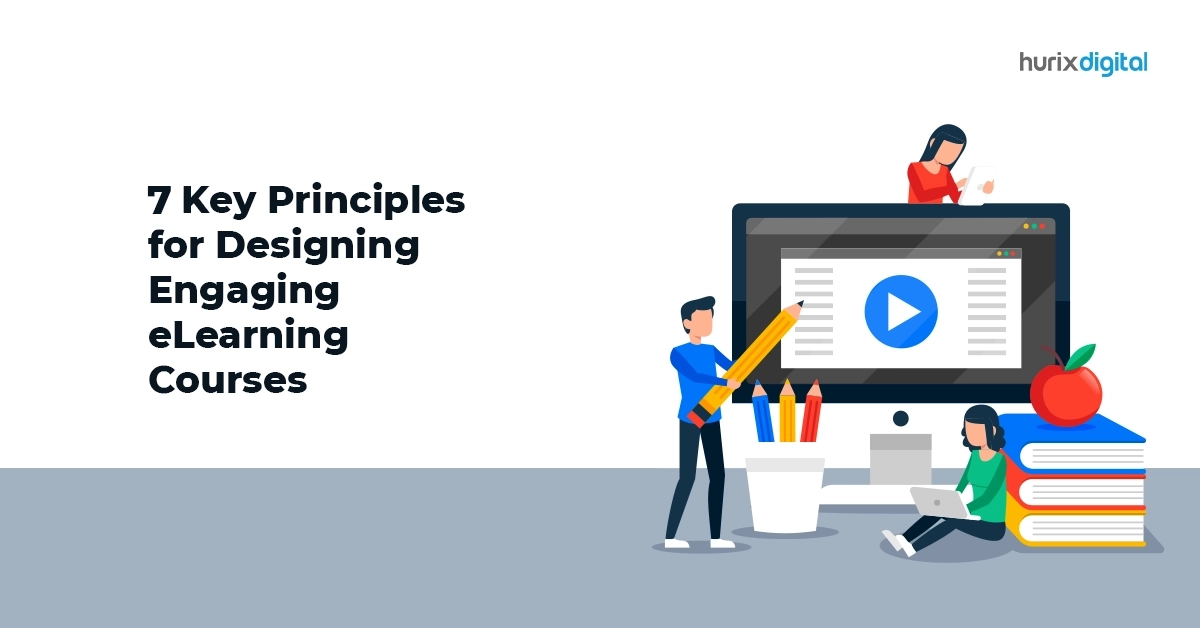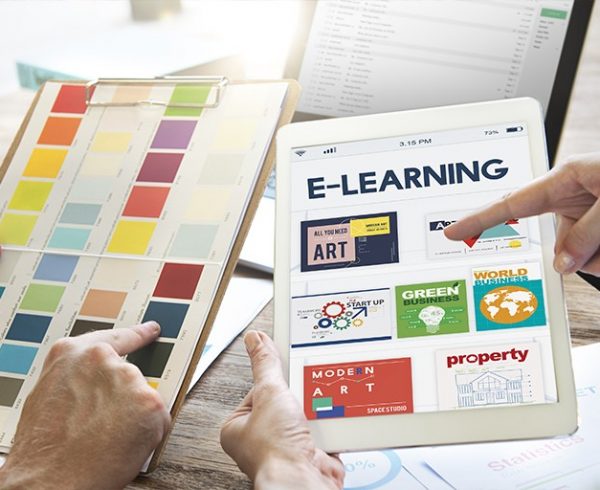The dawn of the 21st century has brought about a major shift in the way global economies function. A number of countries, irrespective of their development trajectory, have started to move beyond the traditional concepts of supply, demand, production, and distribution. Instead, their focus has begun to shift towards the creation of structural ecosystems that are run on the basic premise of knowledge.
Table of Contents:
- What is E-Learning Module?
- What are the Seven Types of E-Learning Modules?
- How to Create E-Learning Modules for Small & Medium Enterprises?
- How to Create E-Learning Modules for Large Enterprises?
- The Way Forward
Even at a micro-level, the acquisition and enhancement of knowledge have become the primary focus for eliminating all financial woes. This is why it comes as no surprise that about 72% of organizations across the world have started investing in e-Learning systems. With the singular aim of updating workforce skills, increasing employee retention and improving business reach.
However, when it comes to actually implementing e-Learning for employees, many companies tend to wonder if their e-Learning modules are appropriately designed to meet their specific needs.
While some organizations struggle with the problems of content development and resource allocation, many others grapple with the elements of engagement and pricing. This distinction is, in fact, all the more pronounced in the case of medium & large enterprises.
So, if you are a small, medium or large business that is willing to create a dynamic and professional e-Learning module for its employees, this article lists out a few tips to help you out.
When embarking on the journey of learning module development, it’s crucial for organizations to address key considerations such as content development, resource allocation, engagement, and pricing. Successful learning module development ensures that the e-Learning system is well-designed to meet the specific needs of the workforce. Whether your organization is small, medium, or large, these tips can guide you in creating a dynamic and professional e-Learning module for your employees.
What is E-Learning Module?
E-Learning modules are digital resources that are used for educational purposes, typically for online or distance learning. They can be used as stand-alone resources or as part of a larger course or program. These are online learning modules that can take many forms, such as videos, interactive games, simulations, or text-based materials.
They can be accessed through a computer or other device, such as a smartphone or tablet, and are often designed to be self-paced, allowing learners to progress at their own speed. eLearning modules are used in a variety of settings, including higher education, corporate training, and K-12 education, and can be an effective way to deliver educational content to a wide audience.
What are the Seven Types of E-Learning Modules?
There are many different types of eLearning modules that can be used in educational settings. Some common types include:
- Videos: These can be pre-recorded lectures, demonstrations, or other types of educational content presented in a visual format.
- Interactive games: These can be used to engage learners in a more interactive and fun way, while still teaching them important concepts.
- Simulations: These can be used to allow learners to practice skills or concepts in a simulated environment, allowing them to learn through hands-on experience.
- Text-based materials: These can include documents, PDFs, or other types of text-based resources that learners can read or access online.
- Quizzes and assessments: These can be used to test learners’ understanding of the material covered in an eLearning module.
- Collaborative tools: These can be used to allow learners to work together and communicate with one another online.
- Audio resources: These can include podcasts, audio lectures, or other types of audio content that learners can listen to at their own pace.
Overall, the type of eLearning module used will depend on the goals of the course or program, the content being covered, and the preferences of the learners.
How to Create E-Learning Modules for Small & Medium Enterprises?
When it comes to devising eLearning modules for small and medium enterprises, one must first draw a comparison between short-term investments and long-term benefits. This is because, unlike large organizations, small/medium enterprises do not have the luxury of learning by trial and error.
Their resource allocation is fixed and learning time spans are limited. Therefore, they need to create specialized eLearning modules that are definite in extent, goal-oriented in nature, and methodical in approach.
Such targeted e-Learning for employees can be fostered by:
1. Giving the existing training techniques, a major technology boost
This is to say that instead of worrying about designing new modules, you can simply remix and reuse old materials by integrating them with new audio and video elements. To do so, using a screencast would prove to be a good option.
2. Purchasing ready-made, off-the-shelf courses
Whether you want to create a quiz, collect information, add assessments, or devise a full-fledged course, you can avail of a variety of free/economically priced resources online. Proprietary content can later be added to these courses as a supplement.
3. Employing a Learning Management System (LMS)
Buying a customized LMS to design e-Learning for employees is a one-time investment that would reap quick results. These systems enhance engagement elements, offer focused content, provide user statistics, and prepare advanced reports.
Guide:
How to Choose the Right LMS for Your Business
4. Turning downtime into a productive session
As a small/medium business, you don’t have to lose hours and hours of productivity to downtime anymore. Rather, you can easily use this time to provide e-Learning training sessions, which can be accessed by anyone, anywhere.
5. Creating flexible, inclusive and personalized modules
eLearning modules tend to have the most impact when they are short, direct, and engaging. They shouldn’t merely transfer information and turn employees into passive learners, but provide interactive, personalized & inclusive content.
How to Create E-Learning Modules for Large Enterprises?
Unlike their small and medium counterparts, large organizations are better placed to facilitate e-Learning for employees. This is primarily because these enterprises are not inhibited by the considerations of time, cost, or resources.
They can afford to experiment with a variety of e-Learning systems, thus, reducing chances of inaccuracy or oversight. However, even here, the e-Learning modules need to be drafted in an innovative & purposeful manner.
Such e-Learning for employees can carefully be nurtured by:
-
Deploying a suitable method of learning
Depending on the age, knowledge level, and learning requirements of your employees, you can choose to deploy an e-Learning method that suits their needs. These methods may range from microlearning and gamification to m-learning.
-
Getting everyone, at all organizational levels, onboard
Be it upper management, mid-level administration, or grassroot employees, everyone, across all the levels of your organization, must come onboard. This will help you easily select time frames, allocate resources, or choose between in-house developers & third-party experts for designing eLearning modules.
-
Selecting the right e-Learning features
Although there are a plethora of e-Learning features that you can pick from, you must opt for the ones which meet your specific requirements. Consult all relevant stakeholders and select a user-friendly interface hosted on a cloud-based training platform so that you can train, evaluate & report at the same time.
-
Choosing an appropriate LMS
Owing to the size, strength, and extent of your enterprise, the LMS you choose can’t be the same as small/medium businesses. Don’t select a system merely based on its price. Instead, choose the one which offers course management, data storage, cloud compatibility, technical support, and quick migration.
-
Keep assessing & upgrading from time to time
Once e-Learning for employees has been successfully implemented throughout the organization, you need to keep assessing its impact and making suitable changes from time to time. These upgrades, usually free of cost, help update your workforce with the latest programs & skill sets.
The Way Forward
With the e-Learning market expected to touch a figure of $325 billion by 2025, current obstacles like high implementation time, low buy-ins, and prohibitive LMS costs are set to disappear.
The consequent scalability, consistency, and access will slowly help businesses realize that e-Learning modules, if crafted right, can prove to be a critical success factor. Every organization, despite its size, therefore, will begin to adopt e-Learning solutions, if it intends to hold out on its own against multiple competitive pressures.
In the future, these low cost and high convenience e-Learning systems won’t just help enterprises optimize and manage their diverse workforce potential, but they will also enable them to train their employees in a quicker and smarter way.
In other words, eLearning systems will eventually pave the way for the development of a digitally powered, globally centered, knowledge-based economy.
Related Articles:
- Top eLearning Development Companies for Enterprises & SMBs
- 11 Smart Tips to Choose the Right eLearning Vendor
- eLearning Content Development for Effective Training
- Can Customized Learning Solutions Solve Critical Business Problems
- 10 eLearning Design Techniques for Improved Learner Engagement
- Outsourced Content Development vs In-house Content Development
- 8 Reasons Why Your Business Requires an eLearning Platform











